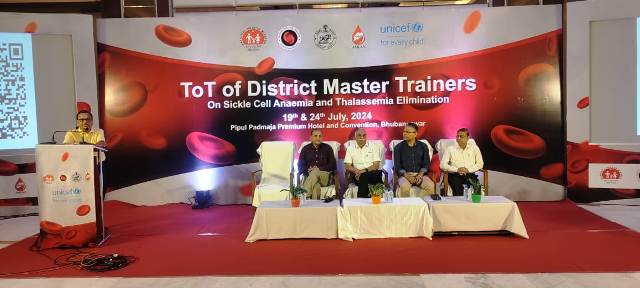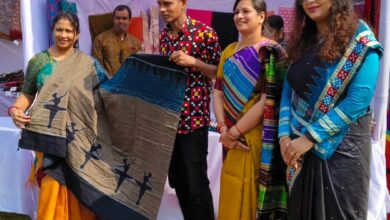
Bhubaneswar, July 24, 2024 – To eliminate Sickle Cell Anaemia and Thalassemia disease
from Odisha, capacity development and sensitization programme for district-based doctors,
managers of Noncommunicable Diseases (NCD) and programme assistants sickle cell
programme, was organized by the National Health Mission (NHM), Odisha, in collaboration
with UNICEF.
Sickle cell disease is a genetic disorder in which red blood cells contort into a sickle shape.
The cells die early, leaving a shortage of healthy red blood cells, causing sickle cell anaemia,
chronic organ damage, and significantly reduced life expectancy.
Odisha is one of the states with a high prevalence of sickle cell anaemia and thalassemia,
found in 21 districts. The prevalence rate in these districts ranges from 10% to 40%, with
individuals either being disease carriers or afflicted. The prevalence of Sickle Cell Anaemia in
Odisha range between 10% to 40%, and Thalassemia is 6% to 10%.
Speaking on the occasion, Dr. Dinabandhu Sahoo, Team Leader, State Health System
Resource Centre (SHSRC), Odisha, informed, "In 21 districts of Odisha, about 30 lakh
screenings have been conducted, identifying 70,000 people with sickle cell disease. We aim
to screen 80 lakh people aged 0 to 40 years in these districts with special focus on tribal
communities over the next five years."
In 2023, the Government of India launched the National Sickle Cell Anaemia Elimination
Mission, aiming to eradicate Sickle Cell Disease by 2047. The initiative in Odisha is a part of
national mission.
Sourav Bhattacharjee, Specialist Nutrition at UNICEF, emphasized on the importance of
patient education and treatment adherence. It is essential to treat and follow up with sickle
cell and thalassemia patients at the grassroots level. We need to spread awareness and
provide counselling to the targeted families.”
4000 Sickle cell genetic status cards have been distributed to beneficiaries for tracking and
treatment. The programme targets screening individuals in tribal population districts over
three years, promoting early diagnosis and intervention.





